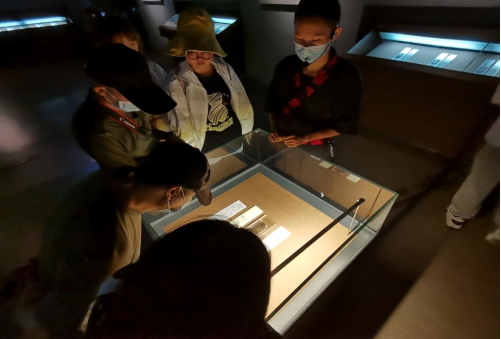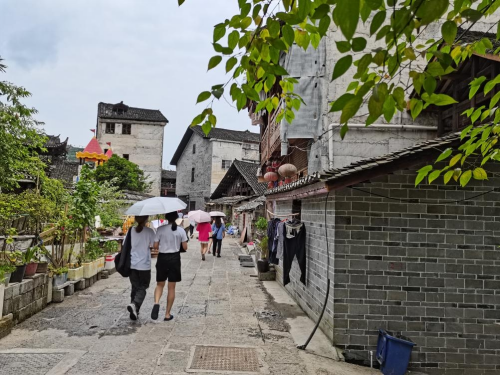(Correspondent: Luo Yuqi) On July 14, 2021, the summer practice of Class 6, Grade 2020 of the Department of Design, School of Art and Communication, China University of Geosciences (Wuhan) went on the fourth day. We left Aizhai and came to Liye, a famous historical and cultural town in China.
Liye Town, Longshan County is located in the hinterland of Wuling Mountain, Hunan Province, which is the junction of Hunan, Hubei, Chongqing and Guizhou. In Tujia language, "Liye" means "developing this land". “There are terracotta warriors and horses in Xi’an in the north and bamboo slips in Liye in the south”. In 2002, more than 37,400 bamboo slips were discovered in a huge ancient well in Liye City, which shocked both China and foreign countries. After that, the ancient city of Liye and the Qin slips became one of the “major archaeological discoveries in the 21st century”.

By observing the real objects of Qin slips and listening to live explanations, we learned about past lives in Liye, learned the bureaucratic policies recorded in Qin slips, and tasted the wisdom of the ancients in the "Nine-Nine Multiplication Formula" bamboo slips. In the process of exploring Qin culture through education and travel, we accepted the baptism of history and culture and felt the profoundness of Qin culture.

Liye Qin Slips Museum is amazing, and the ancient town ruins with rich historical details are also desirable. We followed the tour guide through the ancient streets, stood between the gray and white bricks, and experienced the unique charm of the Matou wall building in Xiangxi.

We set off again, and the ancient city walls winding around behind us and the Youshui River rippling in the blue waves reflected the most lasting dream in the young people’s paintbrushes.
Under the leadership of Mr. Li Meng and Mr. Zhou Bin, we walked into the gate of the Liye Qin Slips Museum and embarked on a tour study of Qin culture.